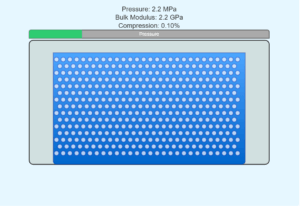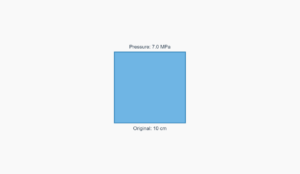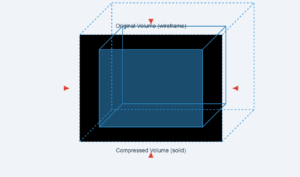Rigid Bar with Three Wires Simulation
5 kg
15 kg
30 kg
1.0 m
2.0 m
3.0 m
Formula: Y = (F/A)/Strain = (4F/πd²)/Strain ⇒ Y ∝ 1/d²
Therefore: d₁/d₂ = √(Y₂/Y₁)
Where:
Y = Young's modulus (Pa)
F = Tension force (N)
A = Cross-sectional area (m²)
d = Diameter of wire (m)
Therefore: d₁/d₂ = √(Y₂/Y₁)
Where:
Y = Young's modulus (Pa)
F = Tension force (N)
A = Cross-sectional area (m²)
d = Diameter of wire (m)
Diameter ratio (copper/iron): 1.26
Copper Wire Properties
Young's modulus: 120 ×10⁹ Pa
Color: Copper
Position: End wires
Iron Wire Properties
Young's modulus: 190 ×10⁹ Pa
Color: Steel gray
Position: Middle wire
Explanation
This simulation demonstrates how a rigid bar is supported by three wires (two copper at the ends and one iron in the middle) with equal tension in each wire.
Because Young's modulus (Y) is inversely proportional to the square of the diameter (d²), the copper wires need to be thicker than the iron wire to experience the same tension under the same strain.
The ratio of diameters is calculated as the square root of the inverse ratio of their Young's moduli: dCu/dFe = √(YFe/YCu)
Adjust the bar mass and wire length to see how the system responds while maintaining equal tension in all wires.



